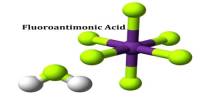Nanomedicine is the application of nanotechnology for medical reasons, and it is described as the use of nanoparticles for illness diagnosis, monitoring, control, prevention, and therapy. Interfacing nanomaterials with biological molecules or structures can provide the functionality to them.
Penn Medicine researchers have developed a new, more effective means of avoiding the body’s own proteins from mistaking nanomedicines for foreign invaders by coating them with a coating that suppresses the immune response that reduces the therapy’s efficiency.
Unmodified nanoparticles are swarmed by immune system elements called complement proteins when injected into the bloodstream, creating an inflammatory response and preventing the nanoparticles from reaching their therapeutic objectives in the body.
Researchers have come up with a few solutions to this problem, but the Penn Medicine team, whose findings were published in Advanced Materials, has come up with what may be the finest solution yet: coating nanoparticles with natural complement activation suppressors.
Because nanomaterials are close in size to most biological molecules and structures, they can be used for biomedical research and applications both in vivo and in vitro.
Nanoparticles are microscopic capsules made of proteins or fat-related compounds that are used as delivery vehicles for RNA or DNA-based treatments or vaccines. mRNA vaccines against COVID-19 are the most well-known instances of nanoparticle-delivered therapeutics.
“It turned out to be one of those technologies that just work right away and better than anticipated,” said study co-senior author Jacob Brenner, MD, Ph.D., an associate professor of Pulmonary Medicine in the Division of Pulmonary, Allergy, and Critical Care.
Many bacteria also coat themselves with these factors to protect against complement attack, so we decided to borrow that strategy for nanoparticles.
Jacob Myerson
Concerns about the application of nanomaterials include physicochemical properties of the nanoformulation that can lead to changes in pharmacokinetics, such as absorption, distribution, elimination, and metabolism, the ability to more easily cross biological barriers, toxic properties, and their persistence in the environment and human body.
The Complement Problem
Therapies based on RNA or DNA typically require delivery mechanisms to get them into target organs through the bloodstream. In the past, harmless viruses were frequently utilized as carriers or “vectors” for these therapies, but nanoparticles are increasingly being seen as a safer option.
Nanoparticles can also be labeled with antibodies or other molecules to help them focus on certain organs. Despite its potential, the complement attack problem has severely hampered nanoparticle-based treatment.
Complement proteins in the blood treat nanoparticles like bacteria, covering them quickly and calling big white blood cells to swallow up the “invaders.”
Researchers have tried to mitigate the problem by coating nanoparticles with camouflaging chemicals such as polyethylene glycol (PEG), which attracts water molecules and forms a watery, protective shell around nanoparticles. However, complement attack on nanoparticles disguised with PEG or other protective compounds still occurs.
Nanoparticle-based treatments that must travel through the bloodstream to perform their functions (mRNA COVID-19 vaccinations are injected into muscle, not the bloodstream) have very low effectiveness in reaching their target organs, usually less than 1%.
Borrowing a Strategy
Brenner and Myerson’s team devised an alternate or add-on technique to protect nanoparticles in the study, based on natural complement-inhibitor proteins that circulate in the bloodstream and connect to human cells to protect them from complement attack.
The researchers discovered that covering ordinary PEG-protected nanoparticles with one of these complement inhibitors, termed Factor I, significantly improved complement protection in lab dishes. The similar method was used in mice to extend the half-life of conventional nanoparticles in the bloodstream, allowing a substantially higher percentage of them to reach their destinations.
“Many bacteria also coat themselves with these factors to protect against complement attack, so we decided to borrow that strategy for nanoparticles,” said co-senior author Jacob Myerson, Ph.D., a senior research scientist in the Department of Systems Pharmacology and Translational Therapeutics at Penn.
The researchers also demonstrated that adding Factor I to nanoparticles inhibits the hyper-allergic reaction that could be lethal in mice models of severe inflammatory disease.
Although more testing is needed before nanomedicines incorporating Factor I can be used in humans, the researchers believe that attaching the complement-suppressing protein to nanoparticles could make them safer and more efficient as therapeutic delivery vehicles, allowing them to be used even in critically ill patients.
The researchers are currently working on techniques to safeguard not only nanomedicines, but also medical devices including catheters, stents, and dialysis tubing, which are equally vulnerable to complement attack. Aside from Factor I, they want to look at other protective proteins.
“We’re recognizing now that there’s a whole world of proteins that we can put on the surface of nanoparticles to defend them from immune attack,” Brenner said.
















